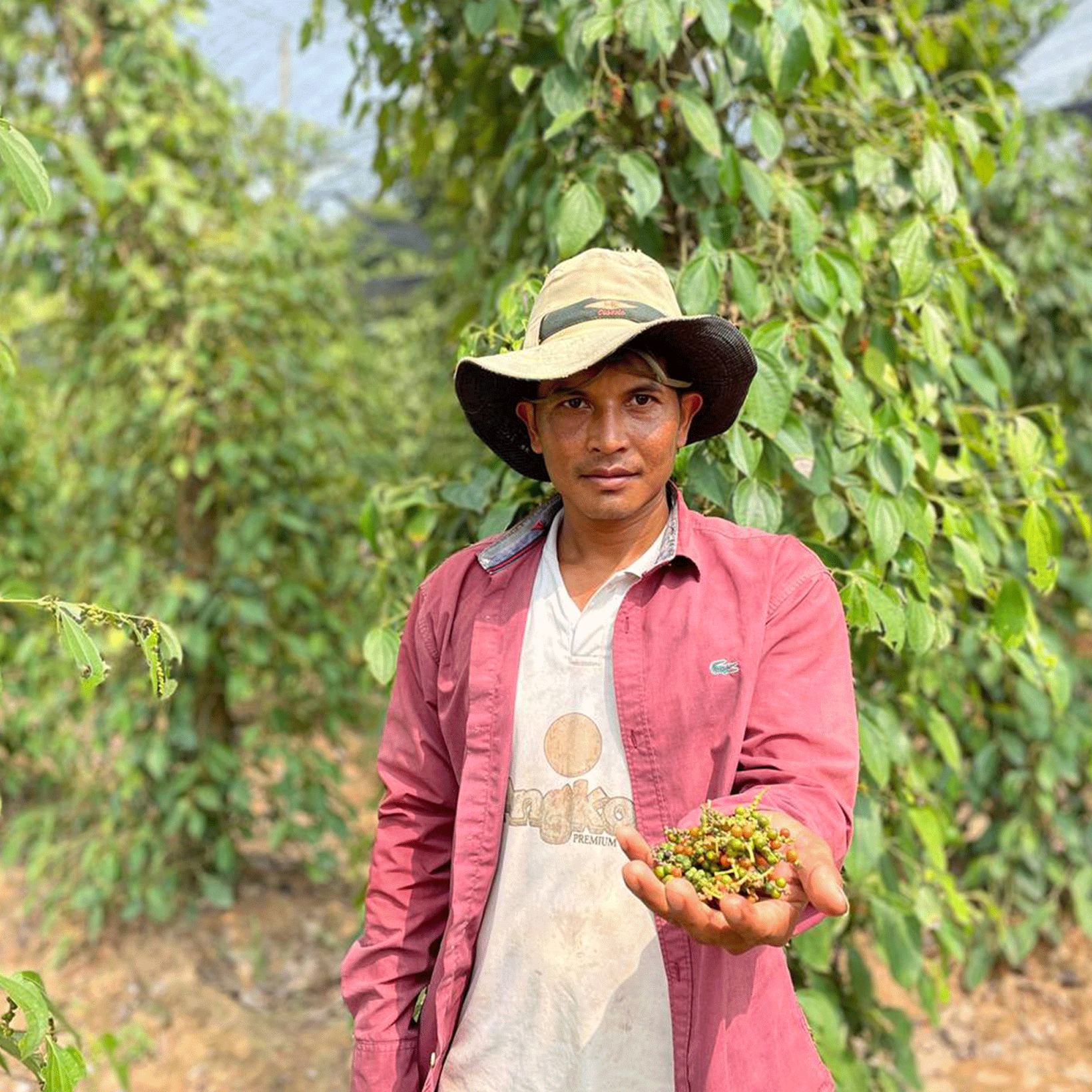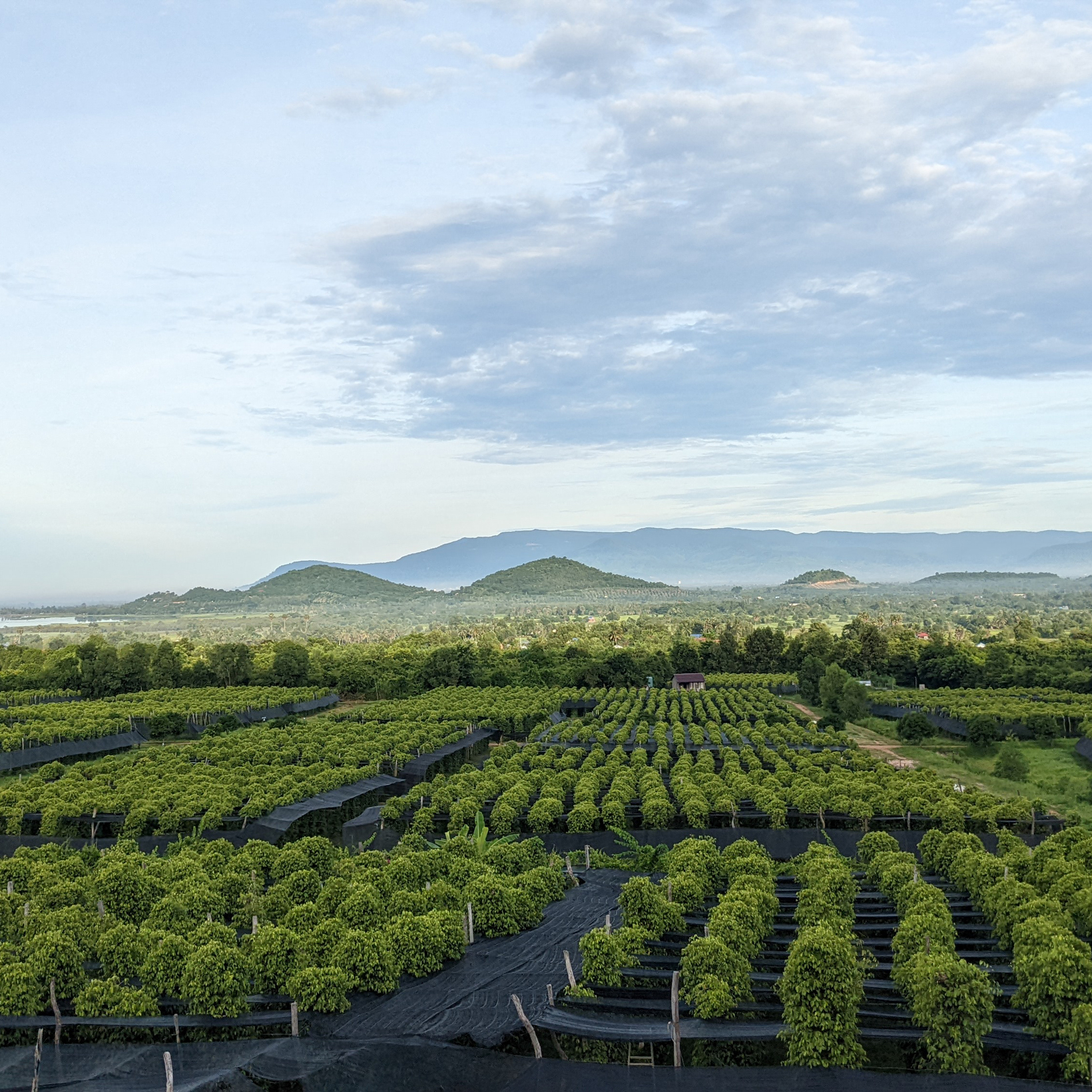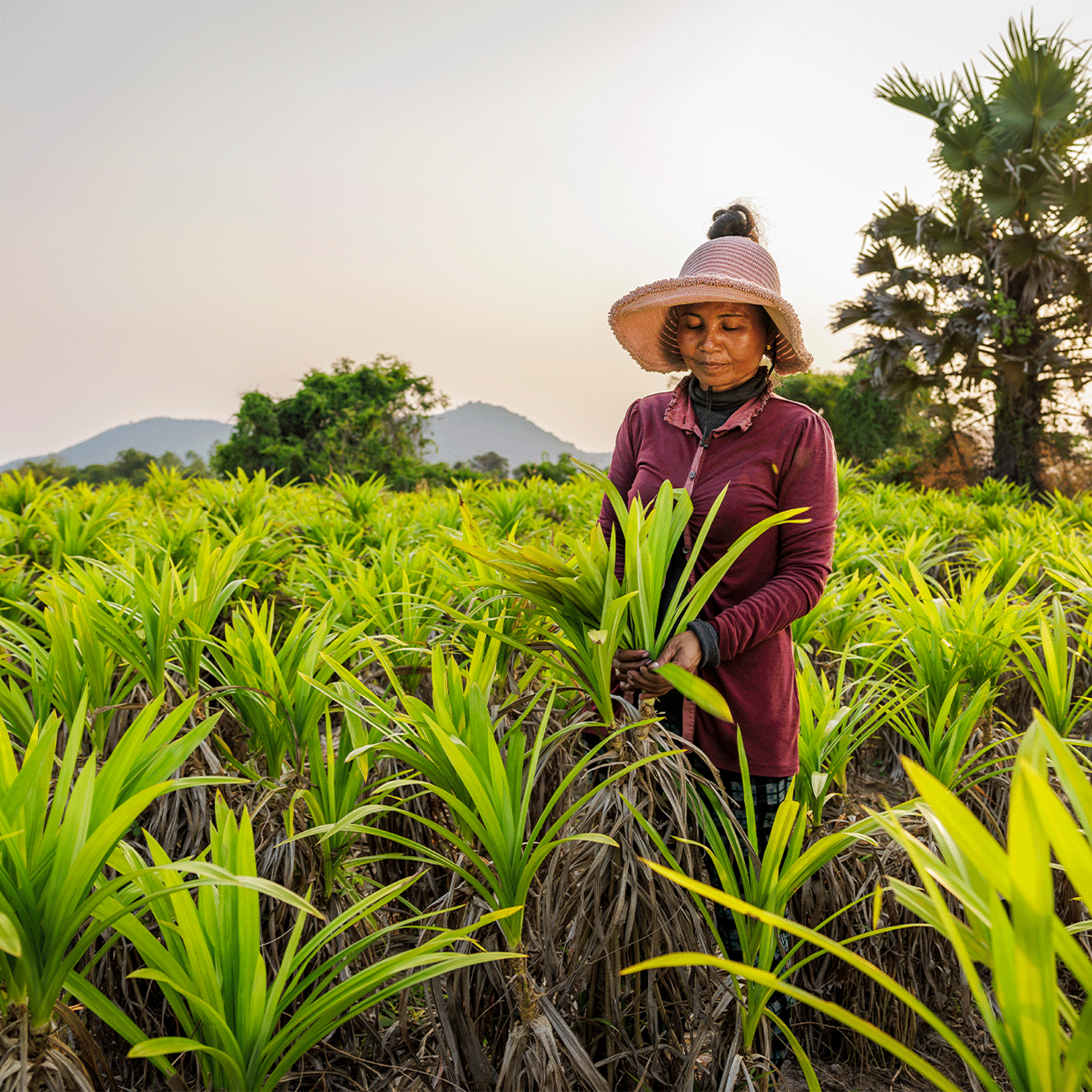
The Short Supply Chain in the World of Spices
In the fascinating world of spices, the journey of each peppercorn or cinnamon stick is often unknown to consumers. Yet, between the small family farm and our kitchens, spices pass through many stages and intermediaries. Often cultivated by local producers in tropical regions, these spices undergo a long journey before reaching our table. By adopting short supply chain practices and promoting “eating local” for spices, we can not only support local producers but also ensure fresher and higher-quality products.
What are the different stages in the spice sales chain?
The spice trade involves numerous steps and intermediaries between the small family farm and the consumer, even though the route is faster today than during the times of caravans and caravels. Most spices are grown in tropical regions and are cultivated or harvested by local populations who do not have access to international markets.
Here are the typical steps of a long supply chain for spices:
- Local producers: Spices are cultivated or harvested by local farmers, often in rural areas.
- Intermediary collectors: Initial intermediaries visit villages to buy the production of fruits, vegetables, plants, and spices from families at the lowest prices.
- National intermediaries: One, two, or three intermediaries within the country will resell the merchandise, each taking a commission along the way.
- Exporters: A company handles the export of spices to various international target markets.
- Wholesale Importers: They receive and clear the merchandise through customs, then distribute it to resellers or companies that package it under their brand.
- Distributors and retailers: The spices are distributed through reseller networks or large retailers who then sell them to consumers.
Ultimately, many intermediaries make a much better living than the small farmer, who takes all the risks and is directly impacted by climate changes affecting his production and family income.
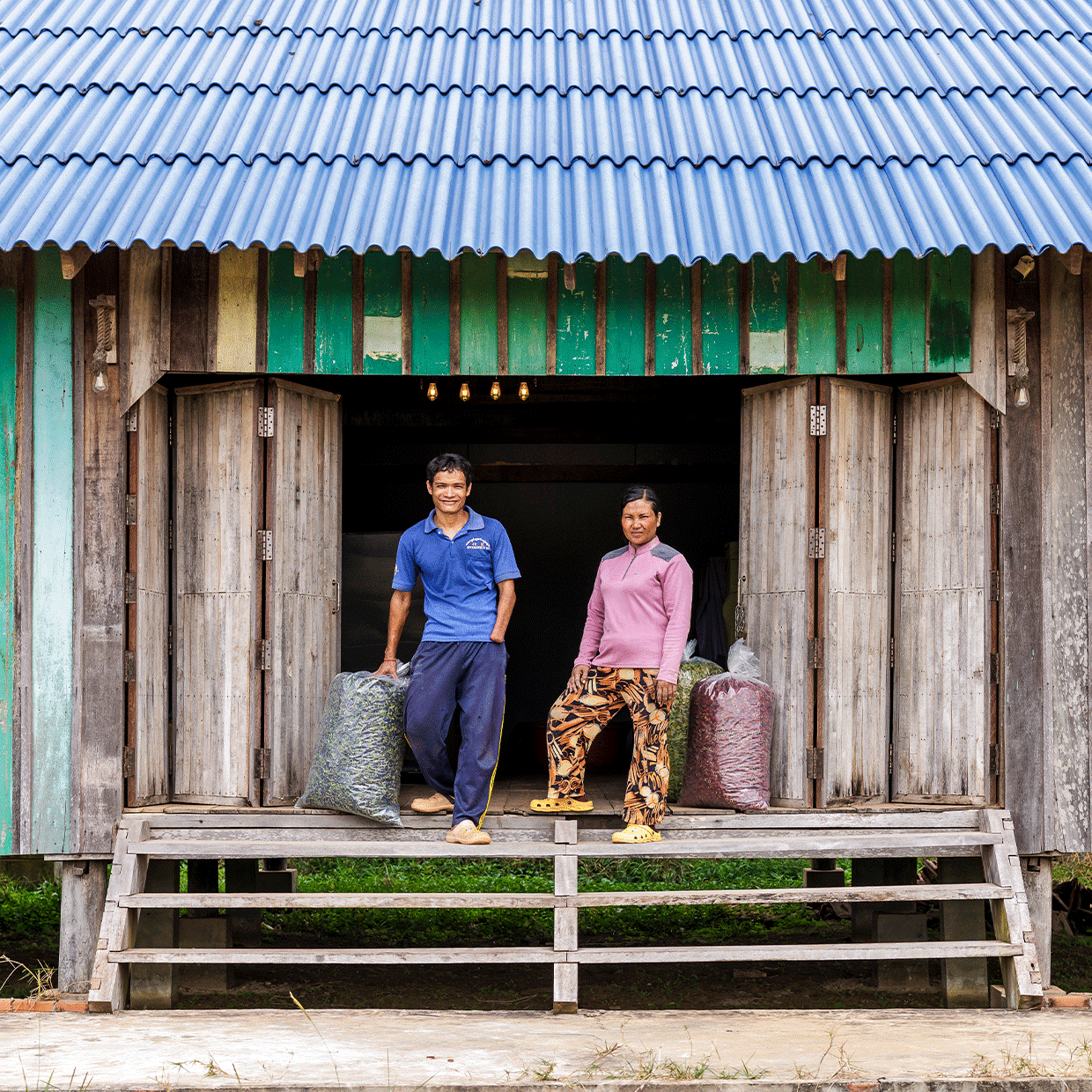
The traceability and freshness of spices, a real question of distribution channels
We are often horrified to see the spice stalls in souks or markets. While it’s visually appealing to see these mountains of powdered spices in all colours, it is inconceivable for the aromas and flavours of these spices. Indeed, a peppercorn or spice loses most of its aroma when subjected to unfavourable climatic conditions. Exposed to light, spices lose their colour; to humidity, they absorb moisture and risk moulding; in the open air, their delicate and volatile essences evaporate easily. This also poses risks for food safety and hygiene.
Therefore, it is recommended to buy spices packaged in airtight containers, protected from light and moisture. Asking the seller about the origin and harvest date of the spice can often reveal surprising information. Control agencies like the DGCCRF report catastrophic results concerning the quality and traceability of spices, with a quarter of tested products showing anomalies in origin, labelling, or composition. Even in supermarkets, it is common to see labels mentioning multiple countries of origin like “Vietnam, India, or Brazil,” making it impossible to know when the spices were harvested; one, two, or even five years ago?
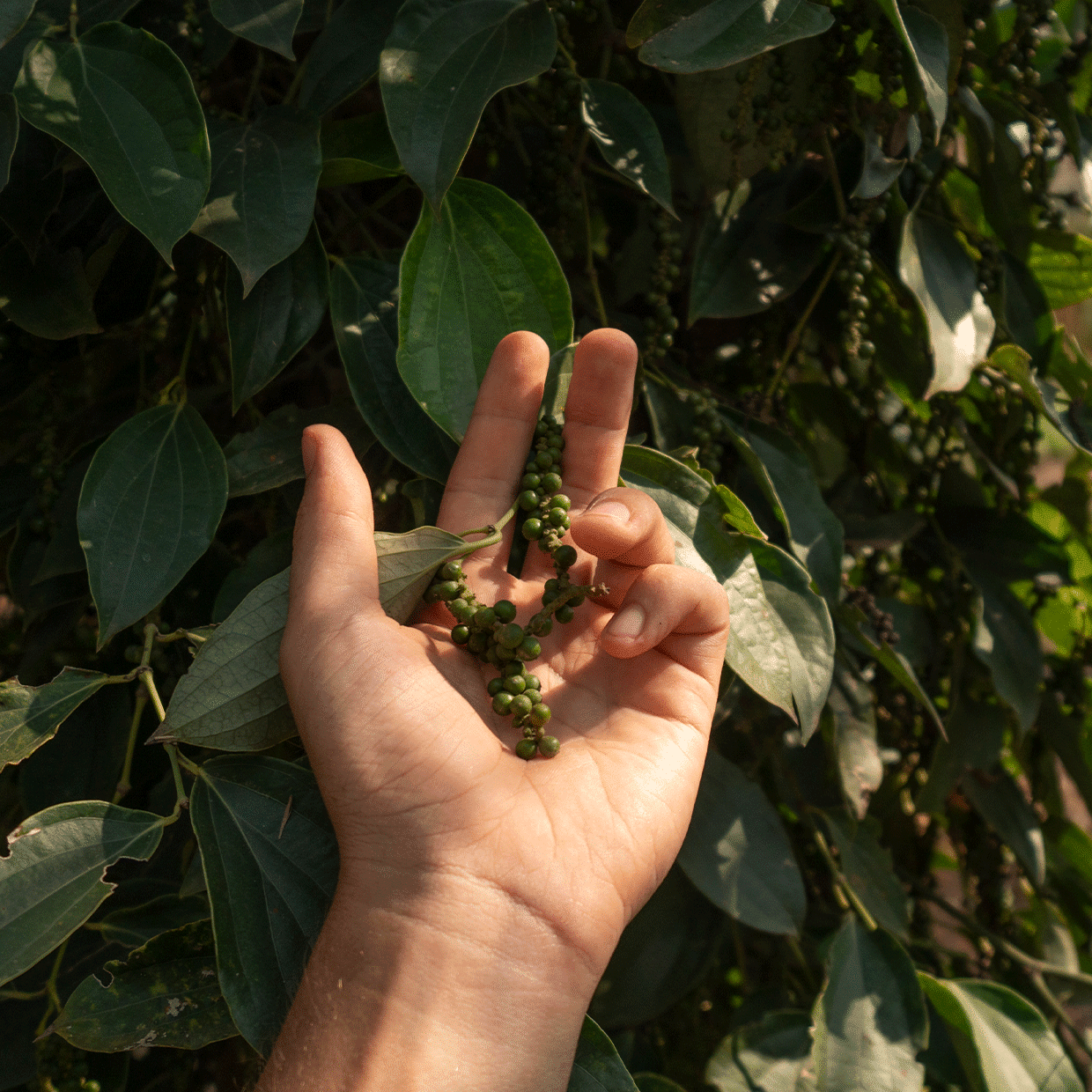
Peppercorns within short and Lon g supply chain
Pepper, one of the most prized spices in the world, offers a perfect example of the differences between short and long supply chains. In the long supply chain, peppercorns pass through a complex chain of intermediaries, from the local producer to intermediary collectors, exporters, and importers, before reaching the shelves of retailers. This lengthy process can drastically alter the quality and freshness of the peppercorns.
Kampot Pepper and “Eating Local”
In contrast, in a short supply chain, the pepper is sold directly by the local producer to consumers, often within the same region. For example, Kampot Pepper, cultivated in the Kampot region of Cambodia, is often consumed fresh by locals. They enjoy it green when it is still young, before it reaches full maturity and turns a deep red colour. This proximity between the producer and the consumer, facilitated by the “eating local” approach, helps preserve the aromas and quality of the spices while ensuring a fairer remuneration for the producers.
By adopting local purchasing practices, consumers can enjoy fresher and higher-quality spices, while supporting local economies and fostering sustainable agricultural practices. This approach not only enhances culinary experiences but also promotes ethical and environmentally friendly consumption.
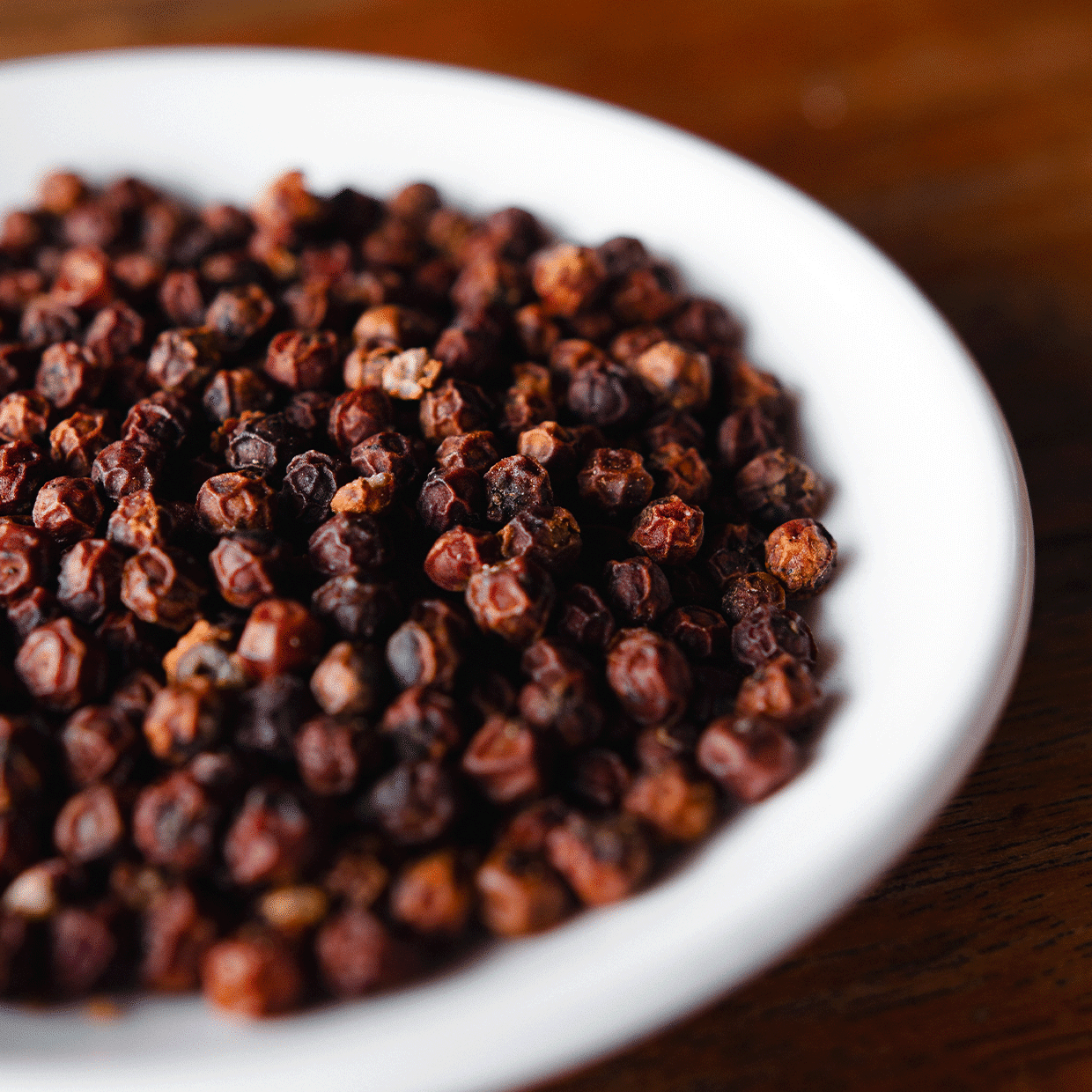
How to recognize authentic Kampot Pepper from a short Supply Chain?
For black Kampot Pepper, for example, the grains should be over 4 millimetres in size, with a beautiful shiny black colour and a characteristic aroma of mint and eucalyptus, according to PGI standards. In the mouth, a good pepper should not burn you, but the aromas should develop and linger, with the distinctive peppery note that is not scorching. The PGI Kampot Pepper logos and the identification of the Kampot producer should be displayed on the product labels.
A long Supply Chain scam: Never buy ground pepper
Even if it seems convenient to use in cooking, never use ground pepper. You would be surprised to see what it often contains: many things, but unfortunately little pepper. Ground pepper is often much cheaper than whole peppercorns because it comes from industrially grown peppercorns cultivated with fertilizers in intensive farming and stripped of their essential oils. These depleted grains have only the shape and name of pepper without containing any aroma.
In restaurants, we fight against the French service style that wants to offer salt and pepper in a shaker. Good quality pepper deserves a quality grinder with which you can choose the grind size to your taste. We rely on you to help support designated origin pepper, like Kampot Pepper, where each grain is harvested, sun-dried, and meticulously hand-selected.
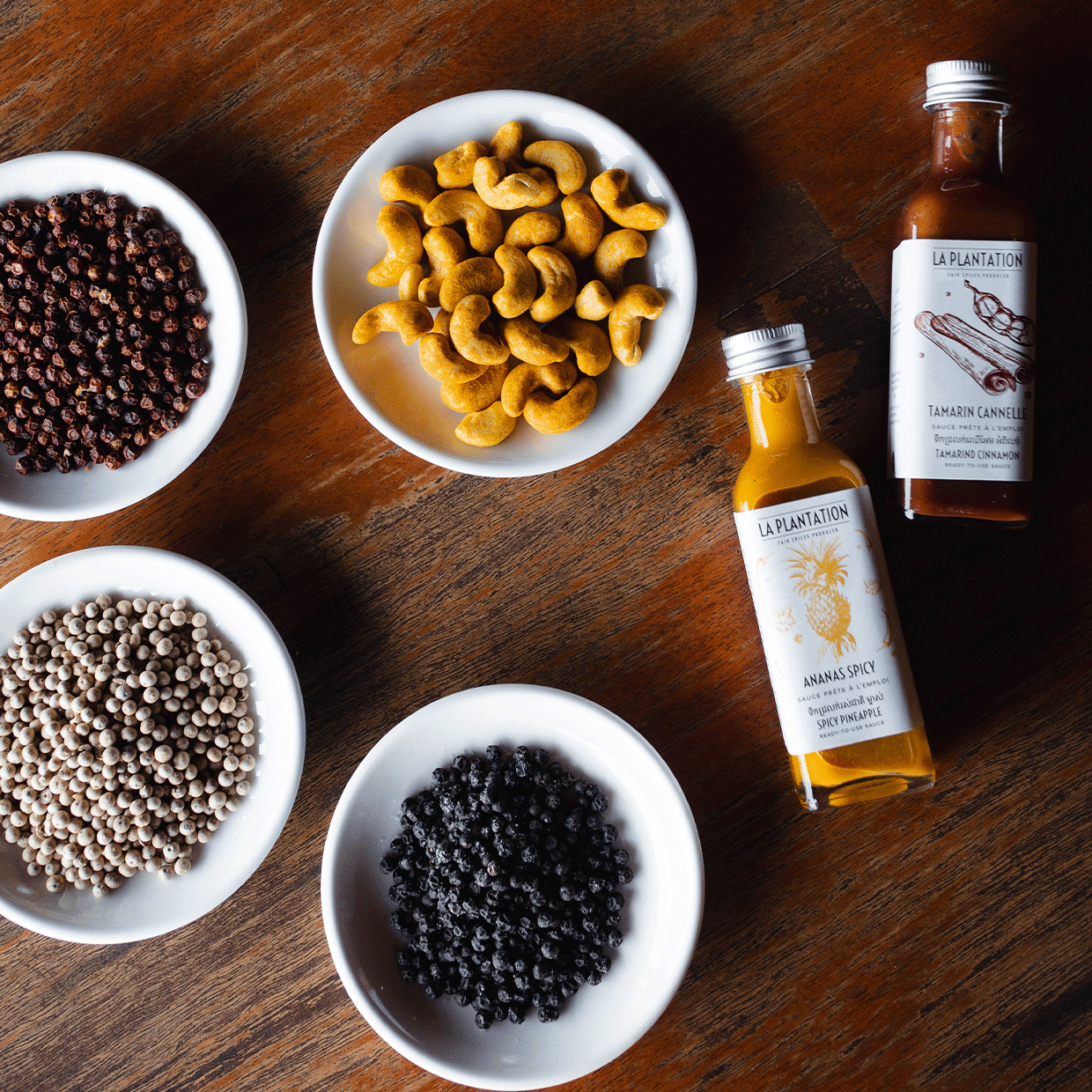
Après avoir compris les différents circuits, comment bien acheter des épices ?
Your nose, eyes, and taste buds are your three allies when searching for the best spices. Be discerning in your choice of spices and buy directly from the producer when possible, or seek advice from your grocer who has selected their producers. Avoid bulk spices; prefer airtight packaging protected from light (avoid glass jars). Read labels carefully to know the country of origin and look for organic, Fair Trade, or other certification logos as indicators of quality. Smell and taste the spices to check their freshness. Fresh spices have strong aromas and vibrant colours.
Adopting a short supply chain for spices is not just about taste but also an ethical and responsible approach. By favouring local producers and supporting “eating local,” we help preserve traditional know-how and ensure fairer incomes for farmers. Kampot Pepper is a perfect example: by choosing products directly from the Kampot region, we obtain spices of exceptional quality, rich in aromas and freshness. Additionally, we can be sure we are consuming products grown with respect for the environment and local communities. Ultimately, choosing spices from a short supply chain is a step towards healthier, tastier, and more equitable food.



